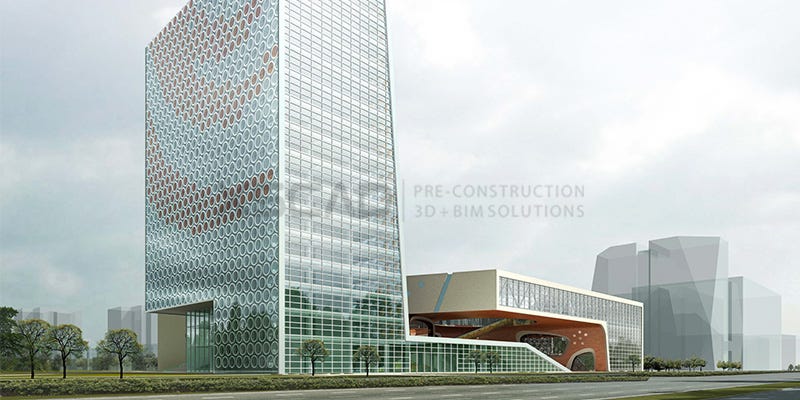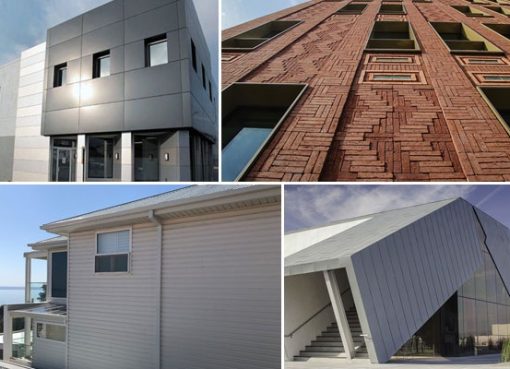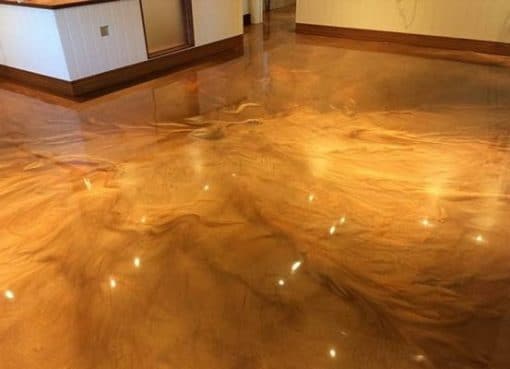Could it be? Is it really possible that tall buildings can be affected by the wind? The short answer is yes; the taller the building is, the more sensitive it is to wind loads. Wind is a complicated phenomenon, consisting of an endless variety of flow situations, especially regarding the interaction of wind flows around, and on, structures. Structures respond to the effects of wind in several ways, such as buffeting, vortex shedding and galloping. Building design must consider these, and other, factors at an early stage for the safety and stability of tall buildings. Climatic changes are unpredictable, and the wind conditions at the time of design may vary markedly from the wind conditions during the lifetime of the structure. Wind load analysis, also effects intent of MEP (M&E) design services and the MEP BIM (Building Information Modelling) design process, attempts to factor all these conditions into the design of tall, slender buildings that are sturdy enough to withstand the effects of strong winds.

Approaching winds, the building’s geometry and the closeness and geometry of buildings nearby can influence the wind pressure on a structure, but these pressures greatly fluctuate and are difficult to calculate. Engineers face challenges in designing buildings that measure more than 200m and can withstand wind loads.
The challenges associated with the effects of wind on a structure are complex, and if not correctly assessed and considered, they can contribute to the instability of buildings. For tall buildings, average wind speed increases with height, and the gustiness, or different combinations of eddies (circular movement of wind), decreases with height. Turbulence buffeting (strong, repeated assaults of wind) can affect tall buildings or towers. Buffeting, galloping and vortex shedding may cause cross-wind responses. Galloping tends to occur in tall buildings and consists of self-induced vibrations produced as an effect of wind load. This galloping can alter the direction of winds on such buildings.
Vortex shedding is a special challenge for tall buildings.

When winds flow unsteadily around the surfaces of a tall building, a pattern of swirling vortices are created. As the wind flows past the building, the vortices are shed, resulting in a reduction in wind pressure at regular intervals. These changes in pressure, in turn, result in a lateral force that is at right angles to the direction of the wind. When the wind speed increases, the vortex shedding frequency attempts to match the building’s natural frequency. This could lead to a degree of building sway which could result in dislodging windowpanes.
Another one of the major challenges of wind-induced movement in a building that is rarely considered is the human response. People are remarkably sensitive to vibrations and the perception of movement. Even low-level stress or strain-induced vibration can cause uneasiness.
Three major wind effects that result around wind-sensitive buildings are:
- Effect on environment — changes in wind flows from a new building can affect the surrounding environment. For tall buildings or skyscrapers in cities, the impact of wind on pedestrians, vehicles, fountains, etc. in the vicinity of the proposed structure must be effectively assessed.
- Effect on façade — the effect of wind pressures on the building’s façade cladding has to be assessed. Assessing design loads on cladding can minimise initial costs and avoid costly maintenance bills resulting from leakage/structural failure.
- Effect on structure — the wind load will affect the lateral load on the structural system of the building.
These are considerations that contribute to effective wind load analysis for tall buildings.
‘Calling the Bluff’
When wind flow around a building does not follow a streamlined surface, but instead detaches from the surface leaving areas of separated flow, the building is known as being aerodynamically ‘bluff’. Most tall buildings are bluff. Simulations for wind flow must accurately measure flow separations and vortex formation. A bluff building tends to separate wind flow into two distinct areas, with high velocity wind flow. Lower negative pressure occurs on the building’s leeward side, which causes drag forces in the leeward direction. Wind load analysis thus factors the effect of bluff buildings into its calculations.
An additional feature of wind load analysis is the lateral wind load.
Basic Design Criteria for Lateral Wind Loads
Wind load analysis is critical to ensure that the following criteria are honoured:
- Stability to counter toppling, uplift or sliding of the building
- Strong structural components to withstand excess loads during the building’s life cycle
- Serviceability of the building, despite expected wind deflections
In order to limit damage and cracking of the façade, interior partitions and ceilings, it is critical to control wind deflection, sway accelerations, sway frequencies and drift. Mass and stiffness of the structure’s material is also an influencing factor in dealing with wind loads.
So, clearly, there are numerous factors to be considered, assessed and calculated to analyse wind loads accurately. An accurate method to perform this analysis is the computational fluid dynamics (CFD) technique within the MEP BIM modelling process of design. The calculations and analysis of the effects of wind determined from using CFD simulation techniques can help design tall buildings that are stable and safe.
Numerical methods and algorithms are used to calculate and analyse fluid flows in CFD calculations and the latest software, such as SkyCiv, Rhino, SpaceClaim and Salome are used for 3D geometric modelling and meshing of the computational domain, and Ansys Fluent, StarCCM and SimScale can facilitate fast, accurate simulations for turbulent flows around buildings.
Through CFD simulations, wind flow behaviour around a building and pressure loads on the structural elements of the building, such as glazing, louvres and façade elements, can be estimated. Certain prevailing conditions may produce high wind loads or turbulence, which may result in resonance in tall buildings. Simulations using CFD have shown that wind pressure on a building’s windward side increases with height and typically reaches its peak near the 30th to 40th floors. Using CFD analysis, engineers can predict base moment, base shear and torsion moment of the building, due to wind. Even the shape of a building (circular or square or rectangular) may require critical study of wind flow around it. Informed design decisions that take these factors into consideration can be made by using CFD techniques early in the design process.
One of the ways to calculate wind loads on tall buildings with CFD techniques has to do with the classification of the building itself. The classifications are dependent on:
- Building location and environment (to decide wind gust speed)
- Importance factor of the building (standards are stricter for critical buildings, such as hospitals)
- Building’s geometrical shape and traits (to decide the right pressure calculation method)
Once the classifications and standards have been decided and depending on the building’s geometric characteristics, different country codes will determine how the following criteria influences the calculation of the wind pressure on a building:
- Effect of surrounding bodies on wind flow — Hills and other buildings can affect wind loads on a tall building. Wake characteristics, formation of vortices, tunnel throttling, wind speeds and wind directions can be predicted and their effects measured through CFD simulations.
- Effects of turbulence and vortex formation — Building corners, uneven surfaces and high wind speeds can alter wind flow. The use of CFD techniques can measure the resulting effects of wind pressure and the stability and safety of the building.
- Interaction of wind and structure — Wind-structure interaction analysis through CFD helps determine building flexibility and any deformation resulting from flow pressure. Then, engineers can predict any potential instability or dangerous vibrations.
- Wind tunnel testing preparation –Wind tunnel estimates and measurements need sensor placement and modelling of other features. Simulation results using CFD techniques can accurately determine where these features should be placed.
To conclude, CFD simulations and calculations, in the wider context of MEP engineering design, are vital to determine the stability and safety of tall buildings. With the availability of cost-effective and technically qualified MEP consultants in India, with extensive MEP BIM modelling experience, it becomes easier to procure accurate wind load analysis for tall buildings at a reasonable price and on schedule.
Source: medium










